When it comes to paying tribute to our loved ones, flowers have a unique way of saying what words sometimes can’t.
However, while funeral flowers can be a great way to honor the deceased, they come with their own set of rules and customs that you have to follow to make sure you’re not disrespecting anyone.
In this guide, we’ll explore how funeral flower etiquettes differ from culture to culture and religion to religion. We’ll also recommend flowers that are universally considered appropriate for funerals.
Funeral Flowers vs. Sympathy Flowers
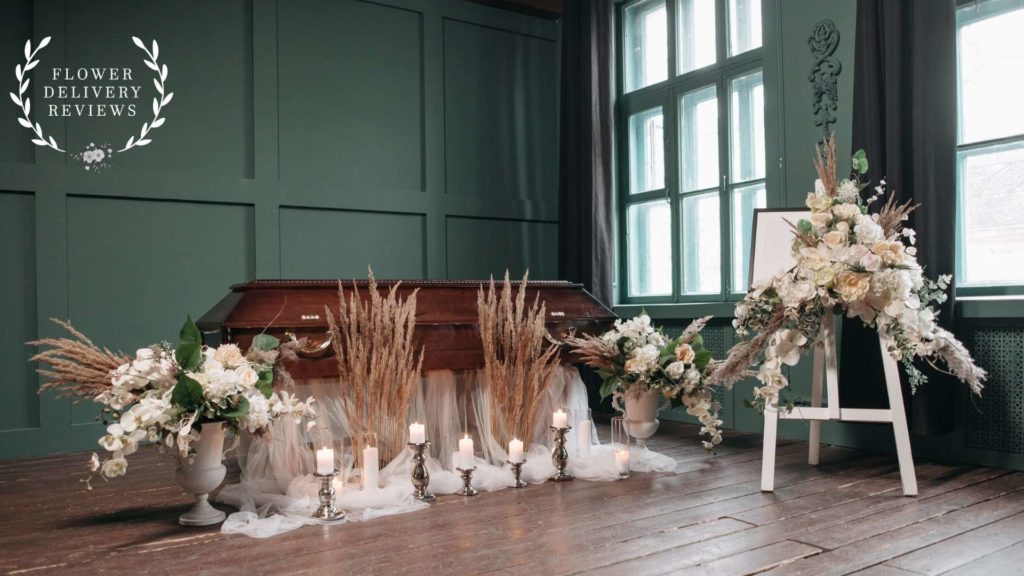
Funeral flowers and sympathy flowers are both floral arrangements sent to express condolences and support to the grieving family.
Although the terms are often used interchangeably, they have different purposes and may have different etiquettes associated with them.
Funeral flowers are typically sent to mourn for the deceased, while sympathy flowers are sent to show empathy to the bereaved.
What are funeral flowers?

Funeral flowers are displayed during a memorial service. They are typically sent directly to the location of the service.
Funeral flowers are often formal arrangements, such as wreaths, casket sprays, standing sprays, and floral tributes. These arrangements are designed as a tribute to the deceased.
Some funeral flower arrangements, especially standing sprays, may include a ribbon with a message of condolences and the sender’s name.
These floral tributes are usually placed near the casket or along the hallway leading to where the deceased is being honored.
While there’s usually no rule regarding color choice, funeral flowers often feature solemn colors like white, pale pink, blues, and purples. Some cultures may also find bright-colored flowers disrespectful.
What are sympathy flowers?
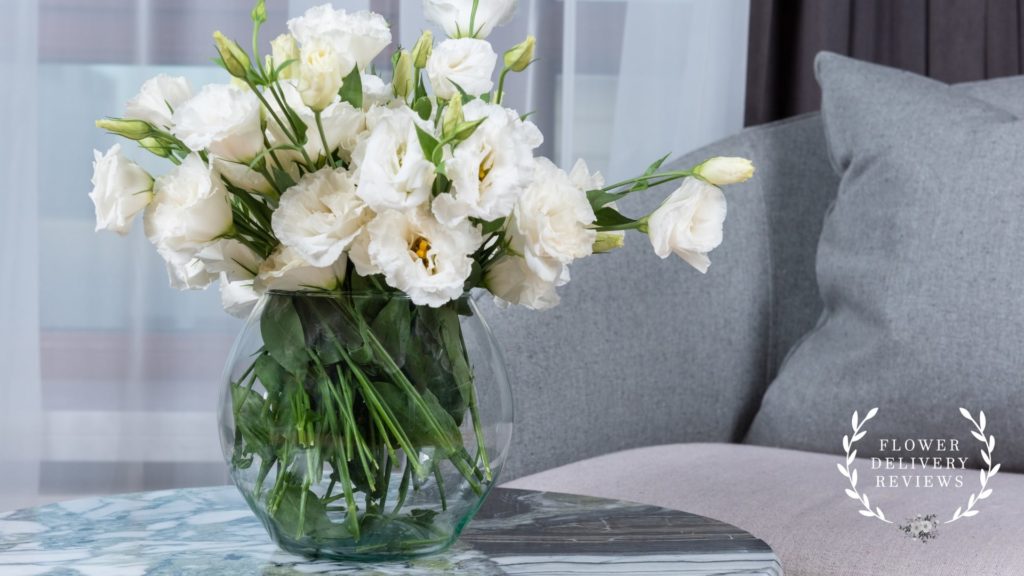
Sympathy flowers are sent directly to the homes of those mourning a loss. They’re intended to provide solace and support to the bereaved.
They can be sent before or following the funeral as a gesture of care and empathy.
Moreover, they tend to be smaller than funeral flowers and are typically bouquets, plants, or floral baskets. They also always include a letter that conveys your support.
Who can send funeral flowers?

Anyone who wants to pay respect to the deceased can send funeral flowers unless the family says they aren’t receiving them from anyone outside the family. Relatives, friends, and co-workers are all usually welcome to send flowers.
Immediate family members, such as parents, siblings, children, and spouses, often take the lead in arranging the funeral flowers. The flowers they prepare, often large arrangements, are usually the ones that are placed on top of the coffin or right next to it.
If you are an acquaintance or a co-worker, it’s best to send something small, like flower baskets and dish gardens.
That said, some businesses may send easel sprays and other large arrangements if the deceased has worked with them or has contributed something to the business.
When should we send funeral flowers?
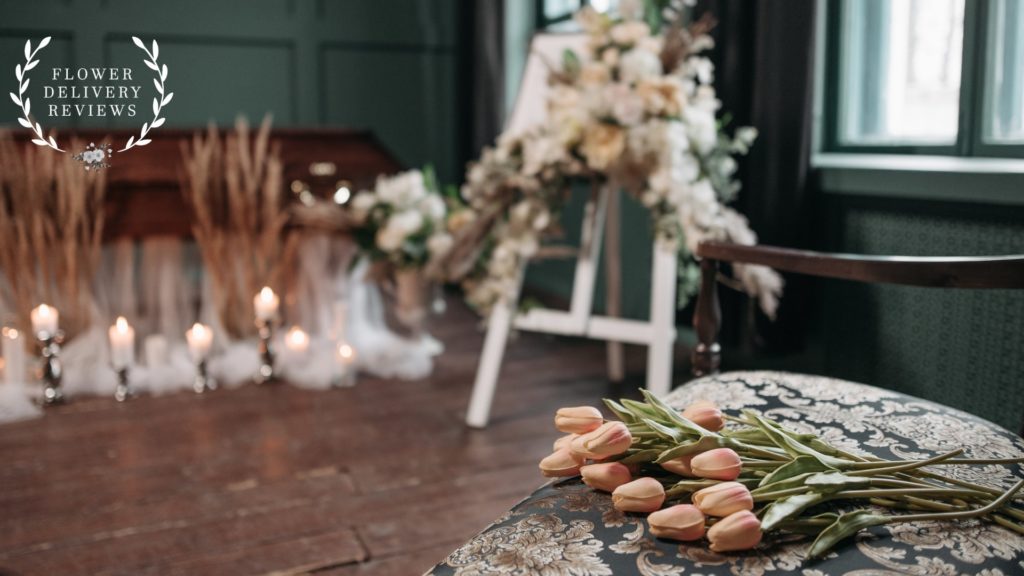
In many cultures, sending funeral flowers to the family’s home or directly to the funeral home before the funeral service is common.
Flowers sent ahead of time can comfort the family during the initial stages of grieving. They may also be displayed during visitations or viewings.
If you can’t send them before the day of the service, you can simply send them on the day of the funeral.
However, it is crucial to respect the traditions and personal preferences of grieving families. The guidelines we provide here serve as advice and should not be followed if the family has specific customs or rules.
Where do you send funeral flowers?
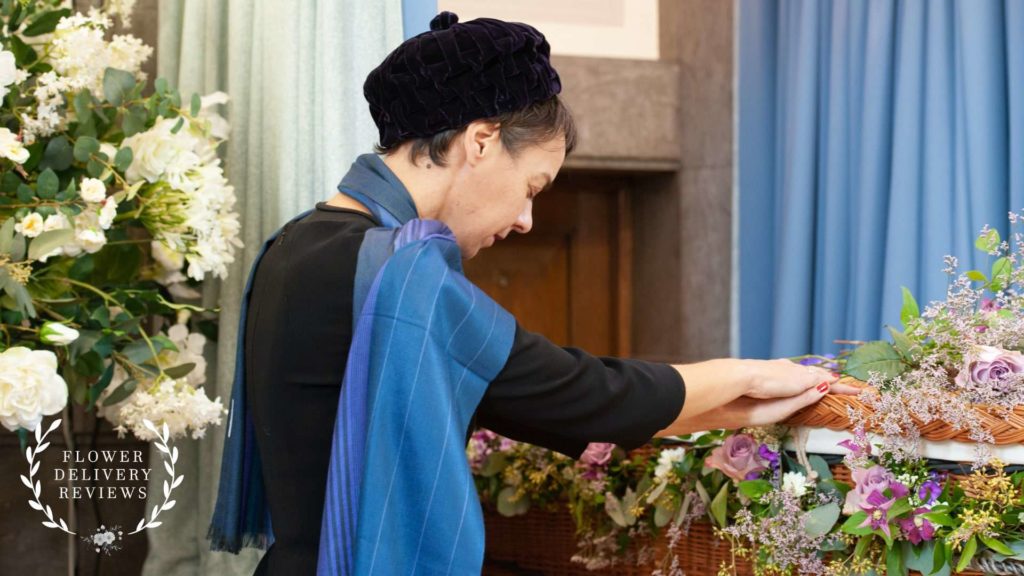
When sending funeral flowers, the general rule is to send them wherever the service is being held, whether it’s a funeral home or a church. However, they can also be sent to the graveside if there’s a burial service following the funeral.
What flowers are appropriate for a funeral?

The appropriate flowers for a funeral typically include those that convey a sense of mourning, sympathy, and respect. More often than not, the flowers are in white and other pale colors.
Here are some flowers that are universally considered as appropriate funeral flowers:
Chrysanthemum
Chrysanthemums symbolize death, mourning, and grief in several cultures, especially in East Asia and Western Europe. Hence, they’re commonly used as funeral flowers in countries like Japan, China, Korea, Belgium, France, and Austria.
Moreover, according to the beliefs of ancient Greeks, mums possess mystical abilities to protect people against evil spirits. That’s why they are popular funeral flowers in Greek funeral ceremonies.
Lilies
Similar to chrysanthemums, lilies are often associated with mourning and sadness. They are also believed to symbolize the restoration of the soul, making them an appropriate flower choice for funerals.
Roses
All roses, not just red ones have become universally known as symbols of love. Preparing a wreath made of them for a friend or relative who died can show your love and respect for them.
The safest color to go to when sending funeral flowers is white and pale yellow, so even if red is the most common rose color, avoid using it. White symbolizes remembrance and reverence, while yellow roses symbolize celebration of their life.
Carnations
Carnations are known for their long-lasting freshness, making them a practical choice for funeral flowers during the mourning period.
Moreover, carnations are often associated with death and remembrance in different cultures. They’re used during Remembrance Day in the Netherlands and are popular funeral flowers in France.
White carnations are the safest choice when sending funeral flowers to any culture. That said, purple carnations are also common funeral flowers in France.
Gladioli
Gladioli flowers are among the most recommended flowers by florists for standing sprays because of their elegant appearance. Aside from their appearance, the flower symbolizes respect for the deceased’s character.
The flowers also represent honor and remembrance.
Cultural Etiquettes to Consider When Sending Funeral Flowers
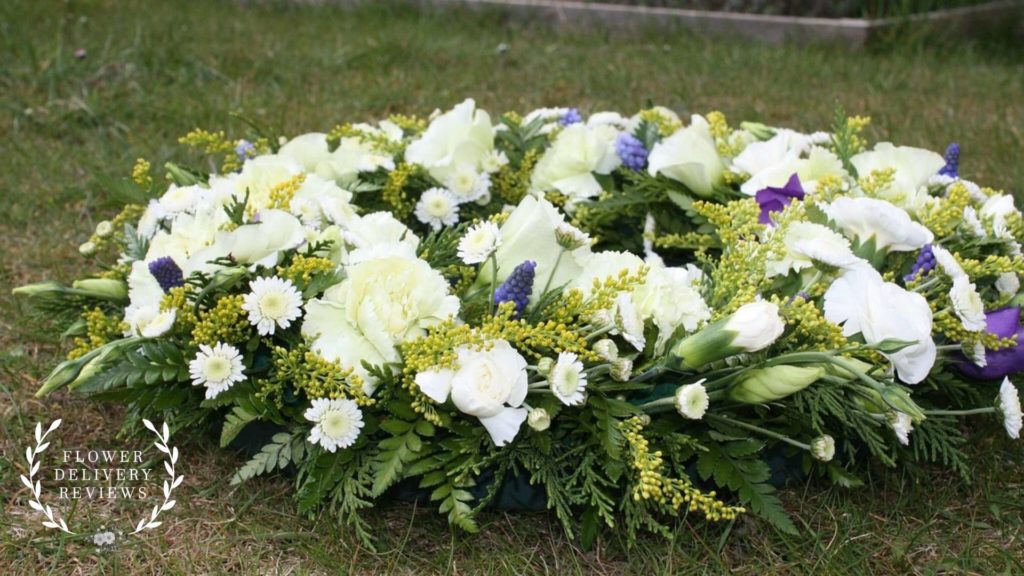
Customs and practices related to funerals and floral tributes can vary widely among different cultures and regions. As such, it’s important that you follow the cultural etiquette of the bereaved when sending funeral flowers.
Here are some cultural etiquettes that you have to consider:
| Culture | Etiquettes |
| Greek Orthodox Funeral | In Greek Orthodox funerals, it’s customary that the funeral service take place at the church the deceased was a member of. Funeral flowers sent by non-family members are often placed at the entrance of the church. Some priests may allow the flowers to be placed inside, but you must ask for permission first. Acceptance of the flowers inside the church is usually decided by the priest and not the family, so you should go to them if you have queries. Color is also very important when choosing funeral flowers. There are colors that are associated with genders that you have to follow if you don’t want to offend the family. Pink and purple flowers are reserved for women, while blue flowers are typically only sent if the deceased is a man. On the other hand, white, red, and yellow can be sent to both genders. |
| Chinese Funeral | The choice of flower colors is significant in Chinese culture. White and other muted colors like pale yellow are more appropriate for mourning and expressing condolences. Avoid using red, as it’s associated with happiness and joy. The family may see it as a celebration of the death of their family member. Chrysanthemums and lilies are often the most suitable flowers for Chinese funerals, as they symbolize death and mourning. If you only have access to white roses, that can work too. |
| Japanese Funeral | Funeral flowers in Japanese funerals are often chosen and arranged by the immediate family. They are mostly used to decorate the casket, graveside, or the area around the altar. It is customary to offer monetary condolences, known as “koden,” rather than funeral flowers. This is typically given in a special envelope provided by the funeral home and is intended to help cover funeral expenses. That said, you can still send flowers together with the koden. Typically, friends and business associates send a large funeral wreath called ‘hanawa’ to mourn for the deceased. This hanawa is brought to the crematorium and burnt together with the deceased. White or yellow chrysanthemums are the most appropriate flowers to send, as they are associated with death. Lilies can be used as a substitute if you don’t have chrysanthemums. |
| Korean Funeral | White chrysanthemums are the most commonly used flowers at Korean funerals. They are associated with mourning and are a symbol of grief and respect. Other appropriate flower choices include white lilies, white roses, and white orchids. These flowers are chosen for their simplicity and muted colors, signifying condolences. Similar to Chinese culture, red is prohibited, not only in flowers but in clothes too. It’s a sign of happiness, so never bring red flowers to the funeral home. Funeral flowers are often only prepared by the immediate family, businesses, and organizations connected to the deceased. Rather than flowers, sympathy money is far more common for friends and acquaintances. |
Religious Etiquettes to Consider When Sending Funeral Flowers
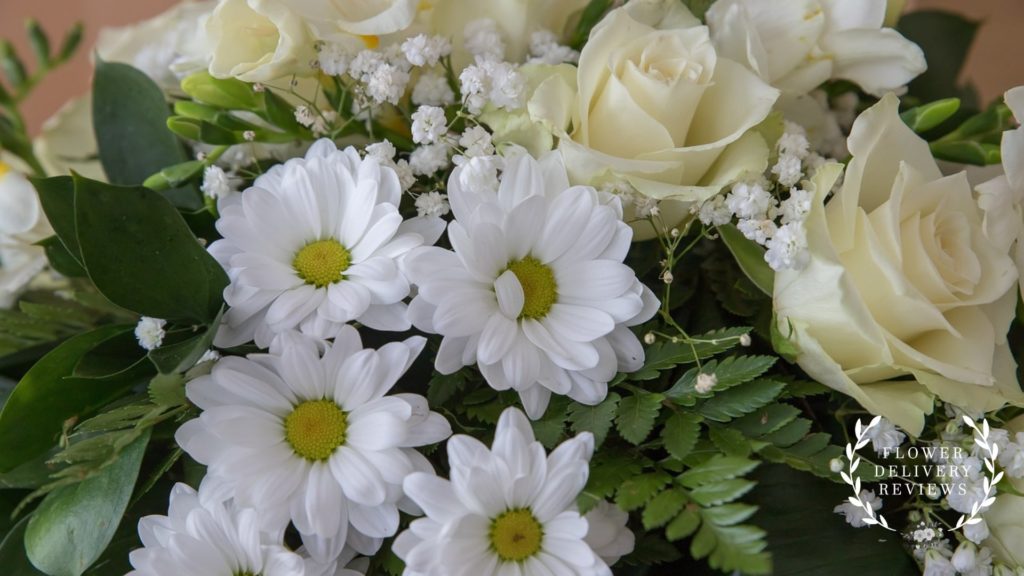
Religion is heavily involved in funeral services. Different religions have different beliefs that may affect the acceptability of funeral flowers.
Here’s a general guideline to follow when sending funeral flowers to different religious funeral services:
| Religion | Etiquette |
| Roman Catholic Funeral | Sending funeral flowers to express condolences is a widely accepted practice among Roman Catholics. It’s often done, especially if you can’t attend the funeral service in person. Any white flower is generally considered appropriate, but the most common choices are chrysanthemums, lilies, carnations, and white roses. |
| Jewish Funeral | While funeral flowers are customary and well-appreciated in many religions, that is not the same for the Jews. In the Jewish faith, sending flowers to the funeral of the bereaved is not appropriate. Some believe that it’s not right to cut a flower and end its life to express sympathy. In addition, Jewish funerals are relatively short, only lasting a day. As such, displaying a flower wouldn’t be practical. Some Jews may also view it as an interruption to their mourning period. Instead of flowers, fruit baskets, hampers, and money are more appropriate. |
| Buddhist Funeral | It is generally acceptable to send flowers to Buddhist funerals. However, you have to be careful when choosing the color of the flowers, as some colors can be offensive. White flowers are typically the best choice when sending funeral flowers if the deceased is Buddhist. White symbolizes mourning and sympathy, so any white flower will do. Never send red flowers, as they can symbolize celebration. The family may think that you’re celebrating the death of their loved one. |
| Hindu Funeral | For Hindu funerals, sympathy flowers are more customary than funeral flowers. This is because flowers are usually not present during the funeral service. If you really want to send flowers, send them to the home of the bereaved family. You can do it before or after the cremation process. |
| Muslim Funeral | The appropriateness of funeral flowers in Muslim funerals depends heavily on the family’s preferences. Some may not accept them, as they see it as going against the Islamic teaching of practicing simplicity. Others may appreciate a few flowers. It’s best to talk to the family first before looking for a florist to prepare your wreath or easel spray. If the family is accepting flowers, white flowers are the safest choice. |
| Mormon Funeral | Sending funeral flowers is common for Mormon funerals. In fact, it’s encouraged that you send one to honor the dead. One thing you have to remember, though, is to never send anything that is shaped like crosses and crucifixes. A cross or crucifix symbolizes the death of Christ, which isn’t part of the religion’s teachings. They believe in the bodily resurrection of Christ and that he is alive and well. |




